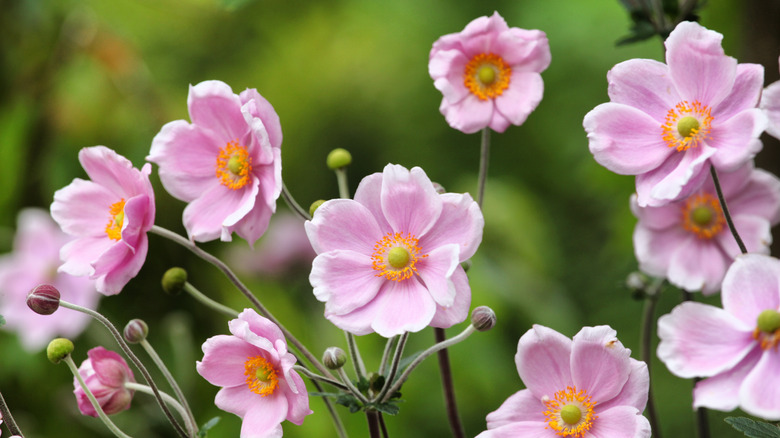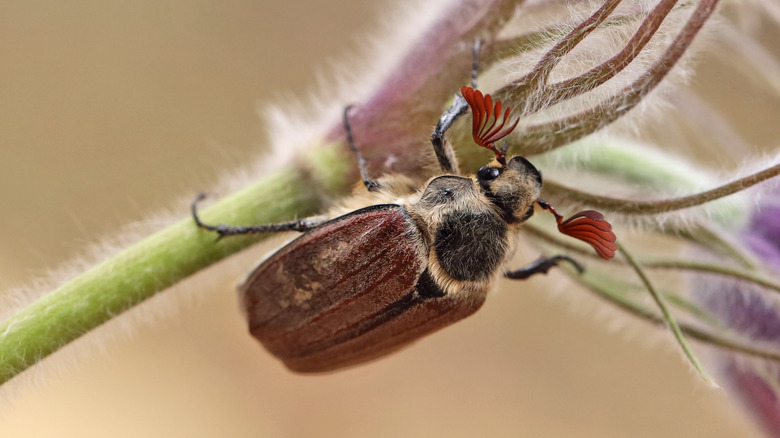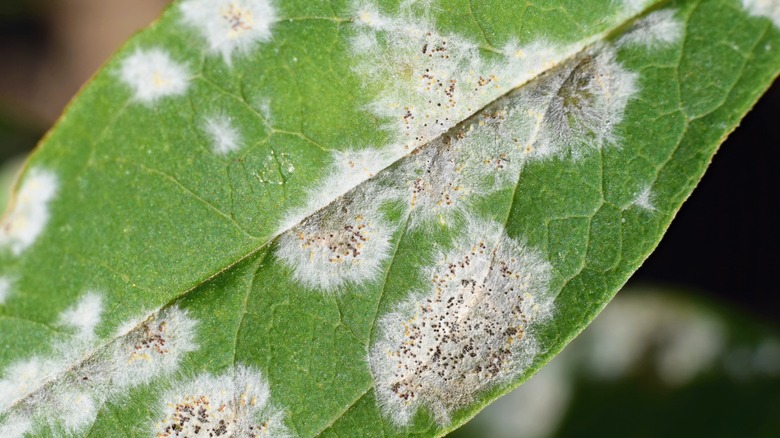Common Pests And Diseases That Cause Damage To Anemone Flowers
Not to be confused with spindly sea anemones, the flower anemone is a lovely blooming species found on land. Related to buttercups and part of the Ranunculaceae family, anemones come in various types, with interesting colors, petal shapes, and leaf formations. They're beautiful blooms, popular in flower arranging and gardens. Although they're bold, eye-catching, and relatively sturdy, there are a few ways in which they're fragile. Their name alone comes from the Greek word for wind: ánemos, which points to how easily they're blown open or destroyed in the breeze and gives them their nickname, windflower.
It's not just windy days that can wreak havoc on these plants either. In comparison to some flora, they're relatively hardy, but there are a handful of pests and diseases that can lead to their demise. This includes issues like powdery mildew — which can take over your garden — and bugs like Japanese beetles, which love chewing at the leaves and roots. If you're growing anemones in your garden, you'll want to have a well-rounded knowledge about the potential threats your flowerbed faces. Here are the diseases and pests to look out for and varieties of anemone that are more resistant than others.
Common pests that affect anemone flowers
When cared for properly and protected from intruding pests, anemones can be the perfect perennial plants for your garden. For the most part, these flowers are far less enticing to pests than others, but that doesn't mean they're fully pest-free. Some bugs that are typically found eating and nesting in anemones are the larvae of moths and butterflies, and well-known gastropods like slugs and snails. There are also types of beetles that like to munch on anemones, including blister and Japanese species.
While anemones are generally not the first type of flower to be ransacked by pests, there are some varieties that are superb at defending themselves and may be worth considering when you're searching out cultivars. The Japanese anemone is one such example, as its flowers typically deter common garden pests like snails and slugs. Other varieties including this one, Honorine Jobert, and Snowdrop anemone also easily ward off rabbits and deer.
Common diseases that affect anemone flowers
Like with pests, anemones can be relatively strong when up against diseases going around the garden. That said, there are a few that commonly afflict anemones. And although the aforementioned Japanese anemone is resistant to pests like snails and slugs, it's not near-invincible when it comes to diseases. It's not just one type either — there are bacterial, fungal, and viroid diseases that are known to glom onto anemones.
The usual lineup includes powdery mildew, downy mildew, different strains of root rot, rust, crown gall, anemone mosaic, and necrotic spot. These all affect anemones in different ways. Powdery mildew creates a coating of white or gray mold on the plant and harm the leaves and buds, whereas downy mildew can result in yellow blotches on the leaves. Diseases like mosaic virus and necrotic spot orthotospovirus can lead to streaky petals and spots across the flower. None of these are fun to come across (or fun for your flowers to go through), but knowing what pests and diseases can damage anemones will help you keep them safe and thriving in your garden.


